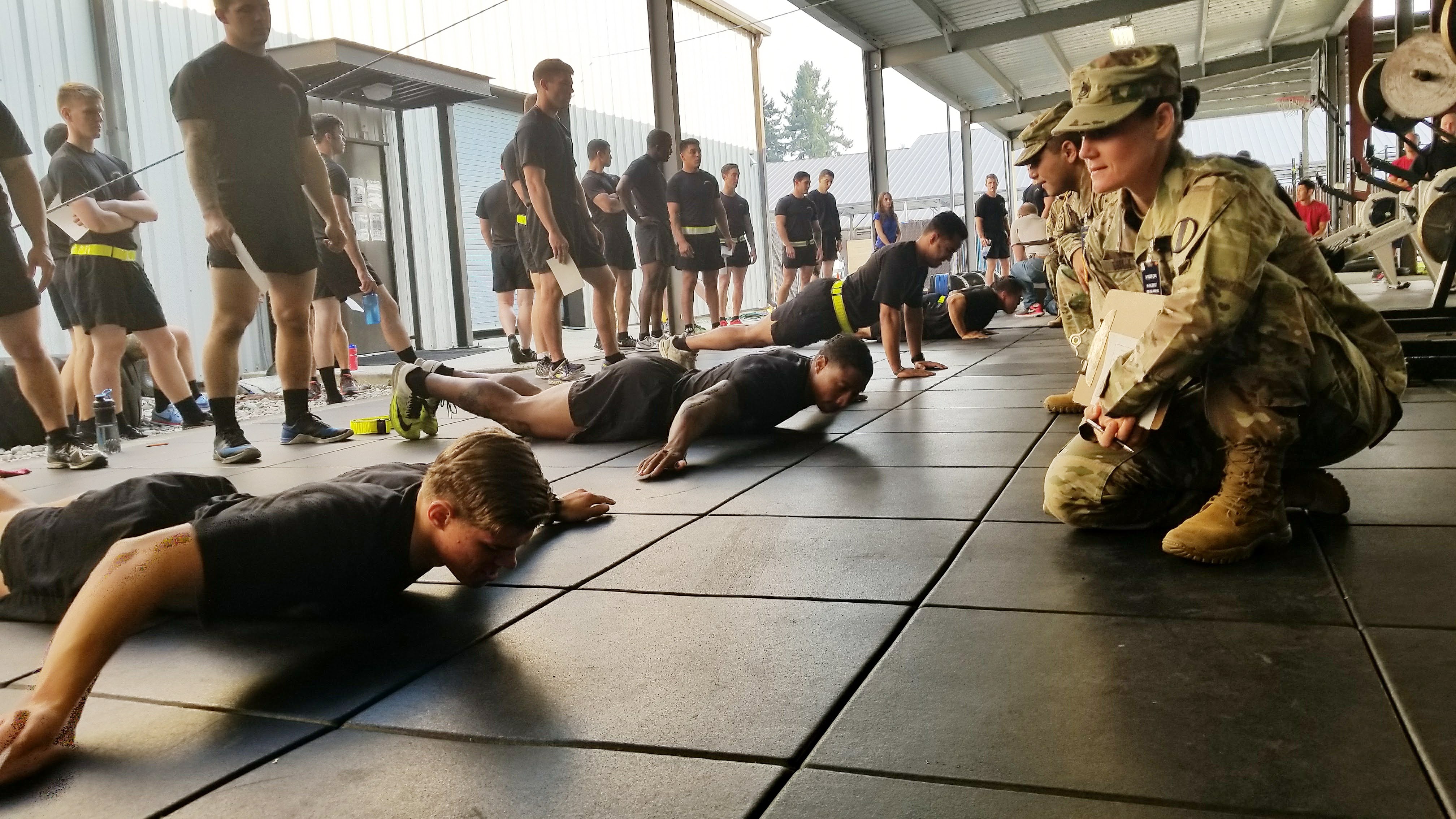HUNTSVILLE, Ala. — To show their support for the Army’s push toward occupational fitness, both Army Secretary Mark Esper and Vice Chief of Staff Gen. James McConville hit a 160-pound deadlift on the show floor at the AUSA Global Force Symposium on Monday.
At the booth manned by members of the Center for Initial Military Training, attendees could learn about the Army’s efforts to create a holistic health and fitness program, training soldiers like elite athletes while assuring they get not only proper rest and recovery, but proper fuel.
But while the Army can create tests that require soldiers to work out in order to pass them, and work stretching and physical therapy into scheduled PT, there isn’t much leadership can do when it comes to what their joes eat.
“You’ve got 10 weeks to start to change behaviors, and all you can do is start to change behaviors,” Michael McGurk, head of CIMT’s research and analysis directorate, said of basic training. “You’re not going to change things permanently, forever, in just 10 weeks.”
McGurk and his team have advocated for nutritionists, lifestyle counselors and sports psychologists in every brigade and battalion to keep the education and resourcing going.
But can the Army train soldiers to eat lean proteins and veggies, the way they train them to shoot their weapons?
“You can to a certain extent,” McGurk said. “Obviously, no system is perfect, and we accept that. But one of the things is by making healthy choices available and unhealthy choices less available.”
For example, at initial entry training, there isn’t a soda to be found in the dining facility. Neither is there any fried food at most of them, he added.

And while it might cost more up front to buy those whole foods, there are cost savings to be had in getting rid of deep fat fryers — which have to be cleaned, and their waste oil disposed of — and serving food that requires less preparation.
“The other challenge we have is once you leave the basic training environment — or the dining facility environment — the food that is available in a rapid manner at lunch is often from places that are not as healthy as we would like,” McGurk said.
Indeed, no health-conscious dining facility can compete with posts’ ubiquitous Burger King outlets in a pinch.
On the other hand, the Army is able to do so much to “soldierize” recruits in those first weeks, from how they groom and carry themselves to their sleeping and fitness habits.
“Which is good, because it kind of shocks the system,” McGurk said. “It’s also challenging, because you’re balancing so many different things, and you’re trying to absorb new information at the same time.”
On Monday, Army Secretary Mark Esper reopened the conversation about extending basic training, which could open the door to integrate more instruction on how to maintain fitness throughout a career.
“Creating a little more space in terms of basic training may help with some of the reinforcement of things you’re trying to get done,” McGurk said.
Esper told Army Times that he is awaiting suggestions from Training and Doctrine Command for how long they might need and how they might fill up that extra time.
Meghann Myers is the Pentagon bureau chief at Military Times. She covers operations, policy, personnel, leadership and other issues affecting service members.




